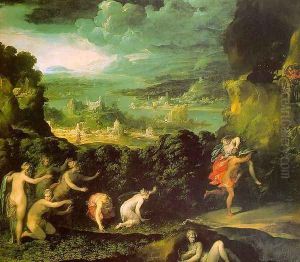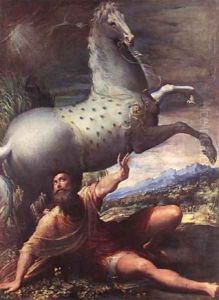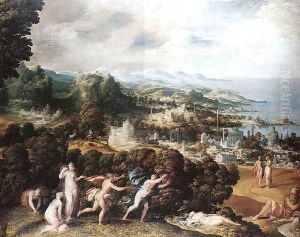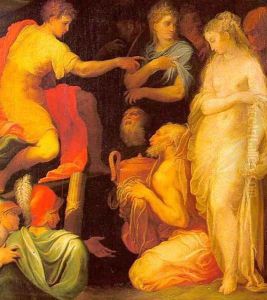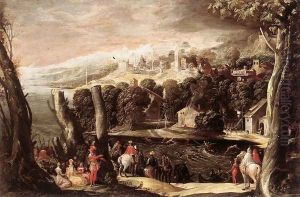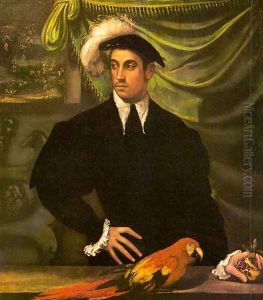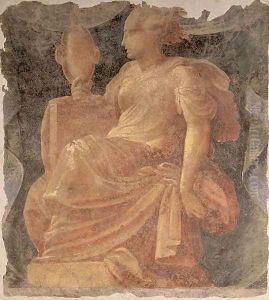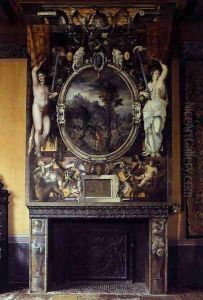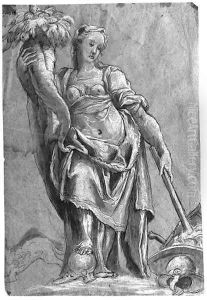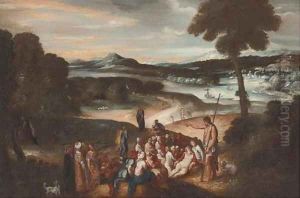Niccolo dell' Abbate Paintings
Niccolò dell'Abbate, born in either 1509 or 1512 in Modena, Italy, was a notable figure in the Italian Renaissance art movement. His work, which often melded the Mannerist style with pastoral and mythological themes, played a significant role in the development of late Renaissance art. Niccolò's early life is not well-documented, but it is known that he was born into a family with artistic connections, which likely provided him with an environment conducive to his future career in the arts.
Niccolò's artistic journey began in Modena, where he was initially influenced by the works of Correggio and Parmigianino. This influence is evident in his early work, which is characterized by its elegance and adherence to the ideals of the High Renaissance. However, as his style evolved, Niccolò began to incorporate elements of Mannerism, characterized by elongated figures and unusual perspectives, into his work.
In the mid-16th century, Niccolò moved to France, where he worked under the patronage of the French court. His move to France was part of a larger trend of Italian artists migrating northwards, a testament to the cross-cultural exchanges between the Italian and French art worlds at the time. In France, Niccolò's work continued to evolve, and he became one of the early contributors to the School of Fontainebleau, which was known for its intricate and refined decorative style. His contributions to the school, particularly his landscape and mythological scenes, left a lasting impact on French art and helped bridge Italian Renaissance influences with the nascent French artistic tradition.
Niccolò dell'Abbate's work in France included not only paintings but also elaborate decorative schemes for the royal châteaux, including Fontainebleau. His designs and frescoes played a crucial role in the development of French Renaissance art, influencing the direction of French artistic taste towards a preference for elegance, detail, and the integration of architectural and natural elements.
Despite his significant contributions to the art of both Italy and France, Niccolò dell'Abbate's name is not as widely recognized as some of his contemporaries. Nevertheless, his work remains an important part of the study of Renaissance art, offering insight into the exchange of ideas and styles between Italy and France during a pivotal period in European art history. Niccolò passed away in 1571, but his legacy lives on through his influential works and the role he played in shaping the artistic landscape of the Renaissance era.
